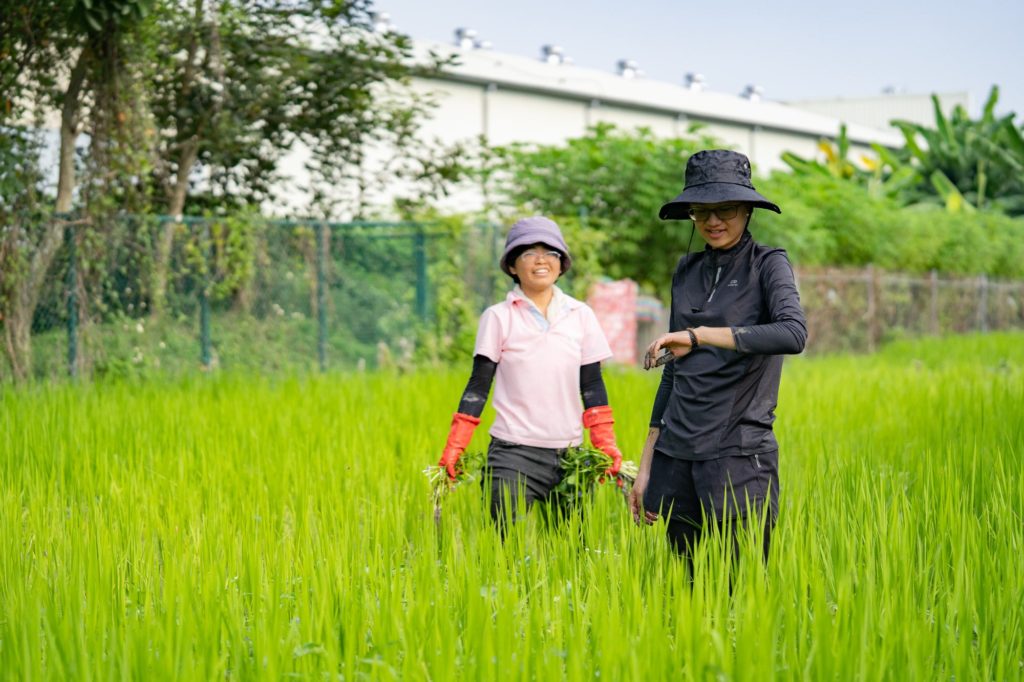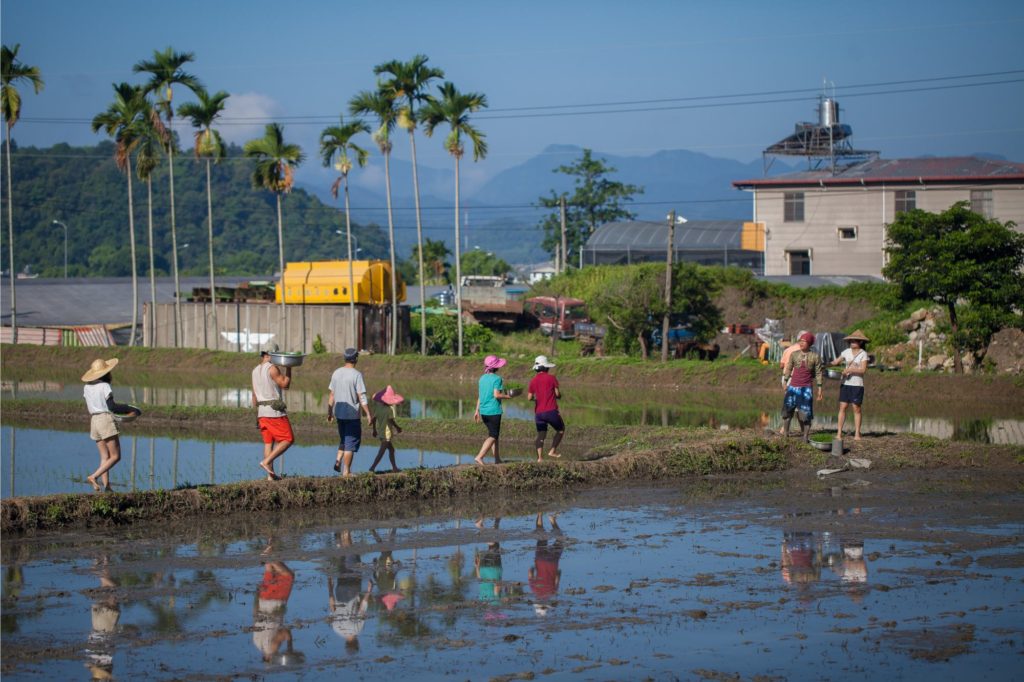Zrozumienie świata kasyn online z uncrossablerush-slot.com/pl/
W dzisiejszych czasach, kasyna online stają się coraz bardzi

【Rice Agri-food education】 Why there is less continuous cropping obstacle in rice: Poaceae and paddy field characteristics
內容目錄
Toggle世界三大穀物為稻米、小麥、玉米,他們都是禾本科一年生草本植物,種子可供食用,是全世界最廣泛栽培的三種作物,而禾本科植物有幾個共通點。
The three major cereals in the world are rice, wheat, and corn. They are all annual grasses of the Poaceae family, whose seeds are edible. They are the three most widely cultivated crops in the world, and the Poaceae have several things in common.

1. 繁殖力高:每一株有許多種子。比如一顆玉米種子,未來的收成大約是 500- 700 粒種子;而一顆小麥種子,未來可收穫 120- 240 粒種子。覺得很多嗎?一顆稻米種子,未來可以收穫 1,600- 1,800 粒種子呢!
2. 營養價值高:富含維持生命不可缺的醣類、蛋白質。
3. 密集栽種:禾本科可密集種植在狹小的土地上,因此在有限的土地上就能大量生產。
4. 長期保存:禾本科經過曬乾以後,便能長期保存,讓人們可以事先儲存,而不會因為歉收或過冬而無法生存。
1. High fertility: each plant has many seeds. For example, a corn seed, the future harvest is about 500-700 seeds; and a wheat seed, the future harvest can be 120-240 seeds. Feel like a lot? A single rice seed can harvest 1,600-1,800 seeds in the future!
2. High nutritional value: rich in carbohydrates and proteins that are indispensable for life.
3. Intensive planting: Poaceae can be densely planted on small land, so it can be produced in large quantities on limited land.
4. Long-term storage: Poaceae can be stored for a long time after drying, so that people can store it in advance, and will not fail to survive due to poor harvest or winter.
多虧了這些禾本科穀物,讓人們可以穩定獲得糧食,也成為全世界文明誕生的基礎。
然而,水稻與玉米、小麥在栽種上有一個非常大的差別,你猜到了嗎?沒錯,玉米和小麥是旱田,而水稻是水田。那水田有什麼特別的呢?
Thanks to these gramineous grains, people can obtain food steadily and become the basis for the birth of civilization around the world.
However, there is a very big difference between rice and corn and wheat in planting. Did you guess it right? Yes, corn and wheat are dry fields, while rice is paddy fields. What’s so special about paddy fields?

水田有一個和旱田非常不同的特性,那就是水田不會產生「連作障礙」。
連作障礙是指在同一塊土地上種植同種或同科作物,產量就會逐漸減少,病蟲害也會變多。一般認為原因是連續種植同一種作物時,土壤的微生物和養分會失衡。
水田不會產生連作障礙,可以維持土壤品質,因此人們才能好幾百年都在同一塊土地上持續種植水稻。而在歐美國家,因為身為主食的小麥需要種植在旱田,所以為了避免連作障礙,就必須進行「輪作」。台灣農地雖然面積不大,但因為採用水田耕作來種植水稻,卻可以養活許多人口。
台灣因為緯度較低、氣溫較高,比較容易有病蟲害,所以有些在台灣的稻農還是習慣輪作,比如早期埔里稻農就會以水稻和甘蔗輪作。
Paddy fields have a very different characteristic from dry fields, that is, there will be no “continuous cropping obstacle” in paddy fields.
Continuous cropping obstacle means that when crops of the same species or family are planted on the same piece of land, the yield will gradually decrease and the pests and diseases will increase. The reason is generally believed to be an imbalance of soil microorganisms and nutrients when the same crop is grown continuously.
Paddy fields do not create obstacles to continuous cropping and maintain soil quality, so people can continue to grow rice on the same land for hundreds of years. In European and American countries, because wheat, which is the staple food, needs to be planted in dry fields, it is necessary to carry out “crop rotation” in order to avoid continuous cropping obstacles. Although Taiwan’s agricultural land is not large, it can support a large number of people because paddy fields are used to cultivate rice.
Due to the low latitude and high temperature, Taiwan is more prone to pests and diseases, so some rice farmers in Taiwan are still used to crop rotation. For example, the early Puli rice farmers used rice and sugarcane rotation.

每一種作物都需要獨特的養分來維持生長,如果連續種植一樣的作物,土壤裡的養分就只有某些特定的種類會被吸收,土壤的養分就會失衡,造成收成量降低。此外,土壤中喜歡這種作物的病原菌、害蟲也會隨之增加,讓病蟲害越來越嚴重。
一般來說,旱田如果在同一個地方連續 2 年種一樣或同科的作物,收成量就會降低,病蟲害也會變得嚴重。為了防止連作障礙,旱田就會實行輪作,而水稻田卻可以每年持續種植水稻,那為什麼水田就不會發生連作障礙呢?
答案就是因為水田大部分時間都處在湛(ㄓㄢˋ)水的狀態,這對水稻有幾個好處。
Each crop requires unique nutrients to maintain growth. If the same crops are planted continuously, only certain types of nutrients in the soil will be absorbed, and the nutrients in the soil will be unbalanced, resulting in lower yields. In addition, pathogenic bacteria and pests that like this kind of crops in the soil will also increase, making the pests and diseases more and more serious.
Generally speaking, if crops of the same or the same family are planted in the same place for 2 consecutive years, the yield will be reduced, and the pests and diseases will become serious. In order to prevent continuous cropping obstacles, crop rotation is implemented in dry fields, but rice fields can continue to grow rice every year, so why does continuous cropping obstacles not occur in paddy fields?
The answer is that paddy fields are in a state of storing water, which has several benefits for rice.

*比熱:使1公克物質上升 1°C 所吸收的熱量。在所有物質中(氣體除外),水的比熱最大,不易變冷或變熱。
*Specific heat: The amount of heat absorbed by raising 1 gram of a substance by 1°C. Of all substances (except gases), water has the highest specific heat and does not easily become cold or hot.

歡迎註明出處並轉載、分享,也歡迎預約雙語米食文化體驗課程喔!
Welcome to indicate the source and share the articles, and also welcome to book a rice culture experience tour with us!
W dzisiejszych czasach, kasyna online stają się coraz bardzi
Stepping into the vibrant world of online casinos can be an
Het maken van de juiste productkeuze kan soms een complexe k